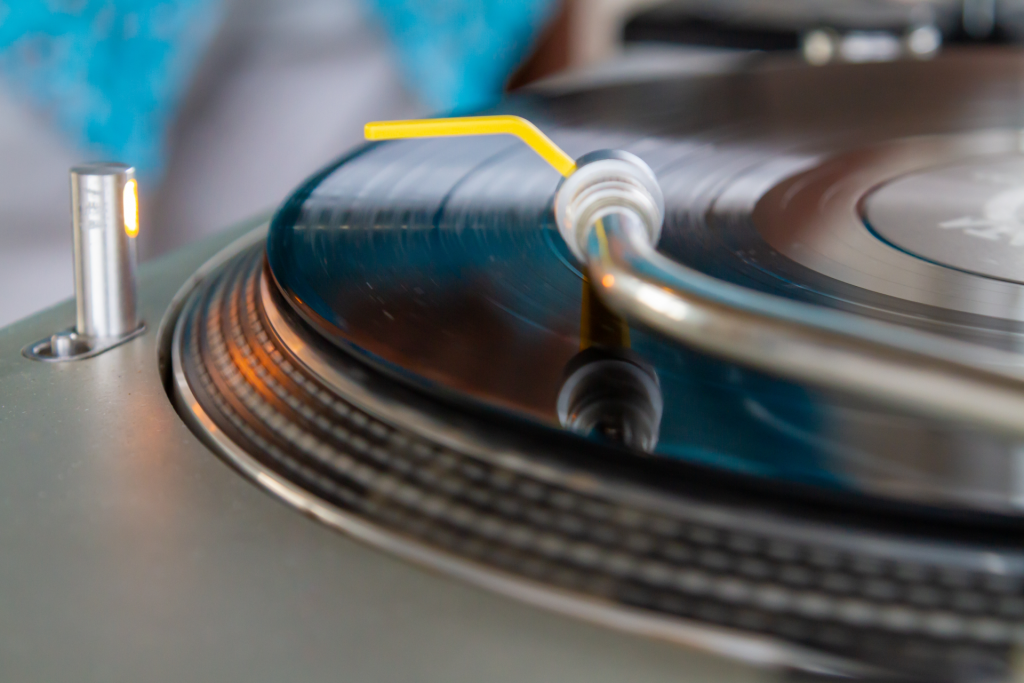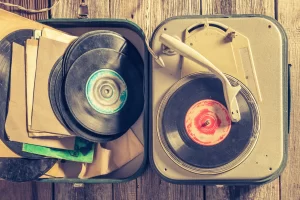In the realm of music production, the transition from analog to digital has been nothing short of revolutionary, each bringing its own character, advantages, and challenges. This evolution has not only transformed how music is produced but also how it is perceived and experienced by audiences worldwide.
In this blog post, we aim to explore the distinct qualities of both analog and digital recordings, delving into their historical contexts, technological advancements, and the unique impact each has had on the music industry. From the warm, rich tones of analog recordings that defined generations of music to the clarity, precision, and accessibility of digital formats that have democratized music production, this comparison offers insights into the choices and preferences of artists and producers.
Whether you’re an aspiring musician, a seasoned producer, or simply a music enthusiast, understanding the nuances of analog and digital music production is key to appreciating the art of sound creation. As we journey through the distinct eras of music production, we’ll uncover how these technologies have not just coexisted but also influenced each other, continually shaping the evolving landscape of music. Join us in unraveling the characteristics, benefits, and limitations of analog and digital music production, and how they continue to leave their mark on the music we love.
The Analog Era
The analog era of music production is often revered for its warmth and organic sound quality. Analog recording involves capturing sound waves as they are, using continuous physical media like tape. This method, predominant from the early 20th century until the late 1980s, defined the sound of several generations of music. Analog technology added a unique character to recordings, often described as ‘warm’ or ‘rich’, which is still sought after by many audiophiles and musicians today.
During this era, the limitations of analog technology, such as the noise and distortion inherent in tape recordings, became viewed as desirable characteristics. These imperfections added a certain depth and personality to the music that digital recordings often lack. Moreover, the physical nature of tape and the mechanical aspects of analog gear required a different approach to recording and mixing, often leading to innovative techniques and creative solutions.
However, analog recording also had its challenges. The equipment was expensive and bulky, making it less accessible to independent artists. The process of editing and manipulating recordings was time-consuming and required a high level of skill. Despite these limitations, the analog era laid the foundation for music production, establishing techniques and aural aesthetics that continue to influence how music is made today.
The Digital Revolution
The advent of digital recording marked a significant shift in music production. Emerging in the late 20th century, digital technology captures and stores sound as binary data, offering a new level of precision and flexibility. This shift to digital was revolutionary, bringing about profound changes in how music is recorded, edited, and distributed.
One of the key advantages of digital recording is its clarity and accuracy. Unlike analog, digital recordings don’t degrade over time and are immune to the background noise and hiss often associated with analog tape. This clarity allows for a more pristine sound, which can be especially beneficial for genres that demand high levels of sonic detail, like classical or acoustic music.
Digital technology also democratized music production. The advent of affordable digital recording equipment and software enabled a broader range of artists to produce music at a professional level. Home studios became more feasible, opening the door for independent artists and producers. Additionally, digital audio workstations (DAWs) introduced a new level of efficiency and creative possibilities, simplifying the editing process and offering a vast array of virtual instruments and effects.
However, some argue that digital recording lacks the warmth and character of analog. This debate continues as both technologies evolve, with many modern producers blending analog and digital elements to capture the best of both worlds. The digital revolution has not only transformed the technical aspects of music production but also influenced the artistic approach to creating music.
Sound Quality and Character
The debate between analog and digital often centers on their distinct sound qualities and characters. Analog recordings are celebrated for their warmth and depth. This ‘warmth’ is often attributed to analog’s natural harmonic distortions and the subtle compression that occurs when recording to tape. These characteristics can add a sense of fullness and richness to the sound, which many audiophiles and musicians find appealing. Analog is particularly cherished in genres like rock, jazz, and soul, where a more organic and ‘lived-in’ sound is often desired.
On the other hand, digital recordings are praised for their clarity and precision. The lack of background noise and the higher possible fidelity mean that digital recordings can capture and reproduce sound with great accuracy. This clarity makes digital recording a preferred choice for genres that require crisp and detailed sound production, such as electronic, pop, and classical music. The precision of digital also allows for greater manipulation and editing in post-production, offering artists and producers more control over the final output.
However, the distinction between analog and digital sound is not always clear-cut. Advances in digital technology have enabled it to emulate the warmth of analog to some extent, blurring the lines between the two. Moreover, personal preference plays a significant role in the choice between analog and digital. Some artists and producers prefer the idiosyncrasies of analog, while others embrace the cleanliness and versatility of digital. Ultimately, the choice between analog and digital often comes down to the specific demands of the project and the desired aesthetic.
Accessibility and Workflow
The impact of analog and digital technologies on music production extends beyond sound quality to include accessibility and workflow. Digital technology has significantly lowered the barriers to entry for music production. Digital Audio Workstations (DAWs) and other software-based tools offer affordable, user-friendly platforms for recording, editing, and mixing. This democratization has enabled a surge of independent artists and producers who can now create high-quality music from the comfort of their homes or small studios. The flexibility of digital recording, with its endless possibilities for editing and sound manipulation, allows for greater experimentation and creative freedom.
In contrast, analog equipment, with its physical limitations and higher costs, is less accessible to the average musician. The process of recording on tape is more demanding, requiring a deeper understanding of the equipment and a more deliberate approach to recording. This can lead to a more organic and interactive workflow, as artists and engineers are often forced to commit to decisions earlier in the process, potentially fostering creativity under constraint.
Moreover, the workflow in analog and digital recording environments differs significantly. Digital workflows offer immediacy and non-linear editing capabilities, allowing for easy alterations and enhancements. Analog workflows, while linear and sometimes restrictive, provide a tactile experience that many artists find inspiring and conducive to a certain type of creativity.
Both analog and digital workflows have their merits and challenges, and the choice often depends on the artist’s preference, the nature of the project, and the desired outcome. While digital continues to dominate the mainstream due to its convenience and versatility, analog retains a dedicated following, with many artists and producers drawn to its unique workflow and the distinctive quality it imparts to recordings.
Cost and Maintenance
The cost and maintenance of equipment are significant factors when choosing between analog and digital music production. Analog equipment, such as tape machines and mixing consoles, can be quite expensive not only to purchase but also to maintain. Analog gear often requires regular maintenance and calibration to keep it functioning optimally, which can add to the overall costs. Additionally, the cost of consumables like magnetic tape can accumulate over time. For these reasons, analog equipment is often seen as a significant investment, more common in professional studios than in home setups.
Digital equipment, in contrast, is generally more affordable and requires less maintenance. Advances in technology have led to a decrease in the cost of digital recording equipment, making it accessible to a wider range of artists and producers. Digital equipment is typically more compact and less susceptible to wear and tear compared to its analog counterparts, resulting in lower maintenance costs. Software updates for digital audio workstations and plugins also tend to be more straightforward and less costly than the upkeep of analog equipment.
This cost-effectiveness and low maintenance make digital a practical choice for independent artists and small studios. However, some professionals and enthusiasts are willing to invest in analog for its unique sound qualities, viewing it as a worthwhile investment for their artistic expression. As such, the choice between analog and digital often comes down to budgetary constraints, personal preferences, and the specific requirements of the music being produced.
Current Trends and Future Outlook
The landscape of music production is continually evolving, shaped by technological advances and shifting trends. Currently, there’s a growing trend of integrating both analog and digital elements in music production. Many modern studios harness the warmth and character of analog equipment while leveraging the flexibility and precision of digital tools. This hybrid approach allows artists and producers to capture the best of both worlds, creating a sound that’s both rich and versatile.
In the realm of digital, advancements continue to be made in software, with plugins increasingly capable of emulating the nuances of analog gear. The rise of AI and machine learning in music production also presents exciting possibilities for the future, potentially revolutionizing how music is created, mixed, and mastered.
Conversely, there’s a resurgence in the popularity of analog gear, particularly among audiophiles and vintage equipment enthusiasts. The vinyl revival and the use of analog synths in contemporary music are examples of this trend, reflecting a nostalgia for the analog sound and a desire for a more tactile music creation experience.
Looking ahead, it’s likely that the music production industry will continue to see innovations that blend old and new technologies, creating a diverse array of tools and techniques for artists to express their creativity. The future promises further democratization of music production, with technology making high-quality music creation more accessible to everyone. As these technologies evolve, so too will the soundscapes they create, offering exciting possibilities for the next generation of music production.
To Sum It Up
In conclusion, the debate between analog and digital in music production is more than just a technical comparison; it’s a reflection of the evolving nature of how we create and experience music. Each method brings its own unique qualities and challenges, influencing the artistic choices and sound of the final product. Analog, with its warmth and character, continues to hold a special place in the hearts of many musicians and producers. Its tactile nature and the inherent limitations it imposes can inspire a certain kind of creativity that digital technology, despite its precision and flexibility, doesn’t always replicate.
Digital technology, on the other hand, has democratized music production, making it accessible to a wider range of artists and enabling an unprecedented level of creative freedom. Its efficiency, cost-effectiveness, and the ever-improving quality of digital recordings make it a compelling choice for many, from bedroom producers to top-tier professionals.
The future of music production seems to lie not in choosing between analog and digital but in finding innovative ways to combine their strengths. This hybrid approach can offer the best of both worlds, providing a rich palette for artists to draw from. As technology continues to evolve, it will be exciting to see how these tools and techniques develop, pushing the boundaries of what’s possible in music production.
Ultimately, whether an artist chooses analog, digital, or a mix of both, the decision should serve the music and the creative vision behind it. The journey of music production, regardless of the methods used, remains a deeply personal and artistic endeavor.




